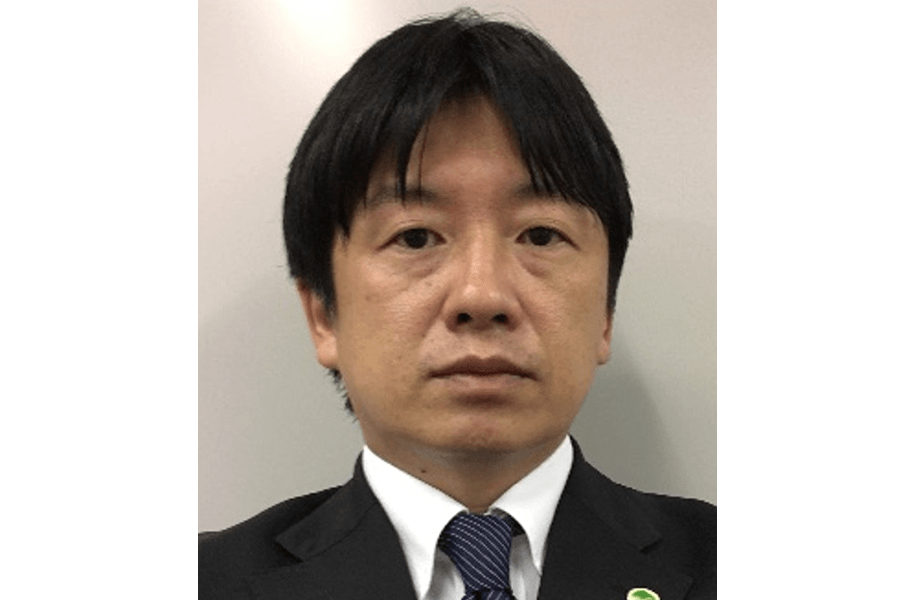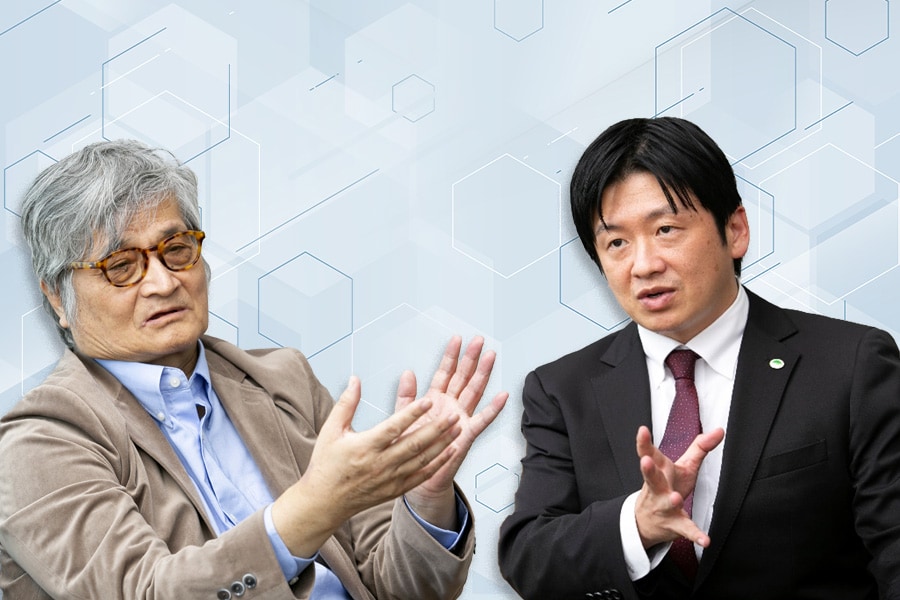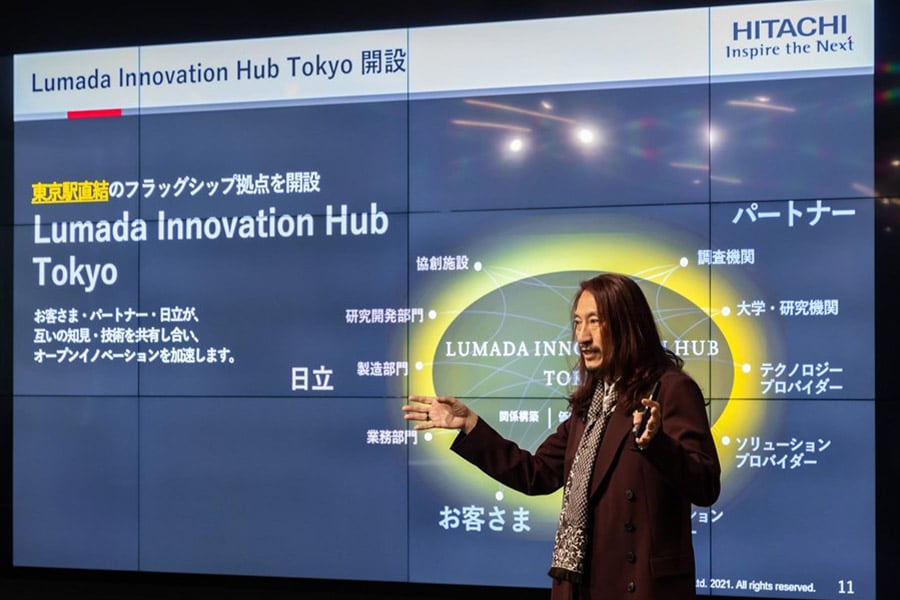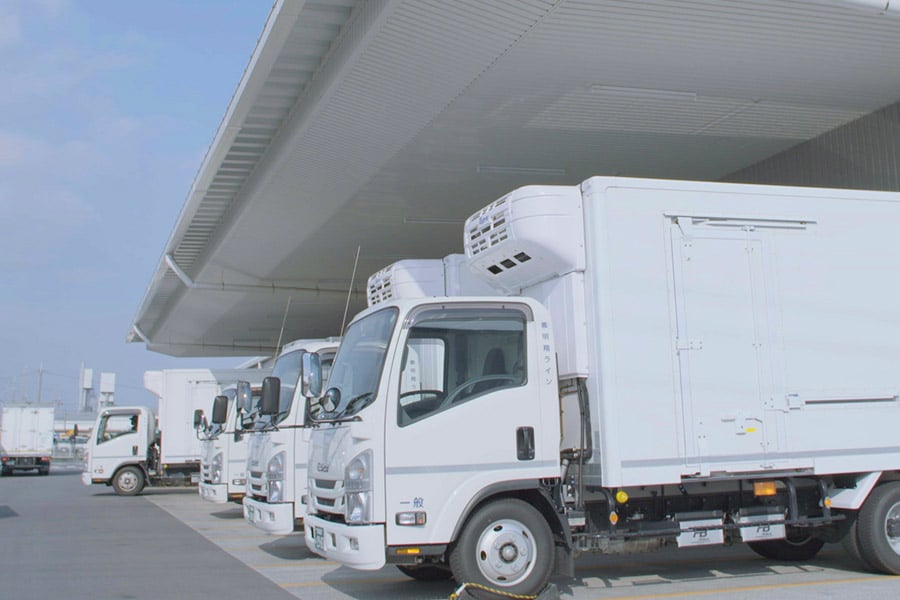Graduated from Kyoto University. Obtained an MBA from Keio Business School. Worked at a steel manufacturer and at Bunkyo University before assuming his current position. Has served as president of the Japan Society for Management Information, vice president of the International Academy of CIO Japan and the editor-in-chief of its journal, advisor to CRM Association Japan, visiting researcher at the University of Hull in the U.K., and visiting researcher at the University of California, Berkeley in the U.S. Has about 10 years of work experience, including a corporate planning position at a manufacturer. Has received the Outstanding Paper Award presented by the Japan Society for Management Information Science, three times.
Changing Hitachi's Organizational Culture and Redefining Its Own Potential Lumada: Illuminating a Future of Collaborative Creation (Part 2)

Online systems, teleworking, and other forms of digitalization are accelerating due to the impact of COVID-19. Part of this is digital transformation (DX), which is gaining importance as a way to use digital technologies to reform operations and business models.
As companies implement DX, the Lumada platform, provided by Hitachi, Ltd., has been attracting attention. Continuing from Part 1, in Part 2 we delve into a conversation between Professor Tatsuyuki Negoro of Waseda Business School and Junichiro Takagi of Hitachi, Ltd. for further exploration of Lumada’s strengths, specific cases, and main points in making a success of DX.
The Lumada formula: IT x OT x Products
Negoro: I believe that Hitachi's strength lies in the fact that it has field divisions. I am referring to how Hitachi combines IT and OT (Operational Technology), which involves expertise and knowledge in controlling equipment used in various types of field applications, such as in electric power, industry, and railways.
Recently, it is being said that "software eats everything"—meaning that software controls everything. There certainly is a world where software can control some household appliances and smartphones in the same way regardless of who made the hardware; however, in the more-complex world of plant facilities and social infrastructure, this is not necessarily the case.
For example, for construction equipment that runs on hydraulics, no matter how good the software is, the 3 mm or 5 mm movement of the valves and cylinders cannot be controlled without “MONOZUKURI” technology or know-how that has been built up over time. Automobiles targeted for autonomous driving are the same.
For the next few decades, "individuality" will to some extent remain in the control of industrial equipment. On the other hand, in the IT sector, where value is created based on data from the field, "commonality" will become important toward improving operation efficiency. For this reason, I believe that a platform such as Lumada, which combines both individuality and commonality, is necessary and that both knowledge of the field and knowledge of digital will be indispensable toward providing superior services to the field.
Takagi: I'm happy to hear you say that. We frequently call this "value creation through IT x OT x Products," and we have a wealth of use cases and solutions in which control technologies for various social infrastructure sectors, including energy, industry, mobility, and smart life, are combined with IT digital technologies and products. Lumada lets this know-how be reused, which in my mind is a huge advantage that our competitors do not have.
Specific use cases that utilize Lumada
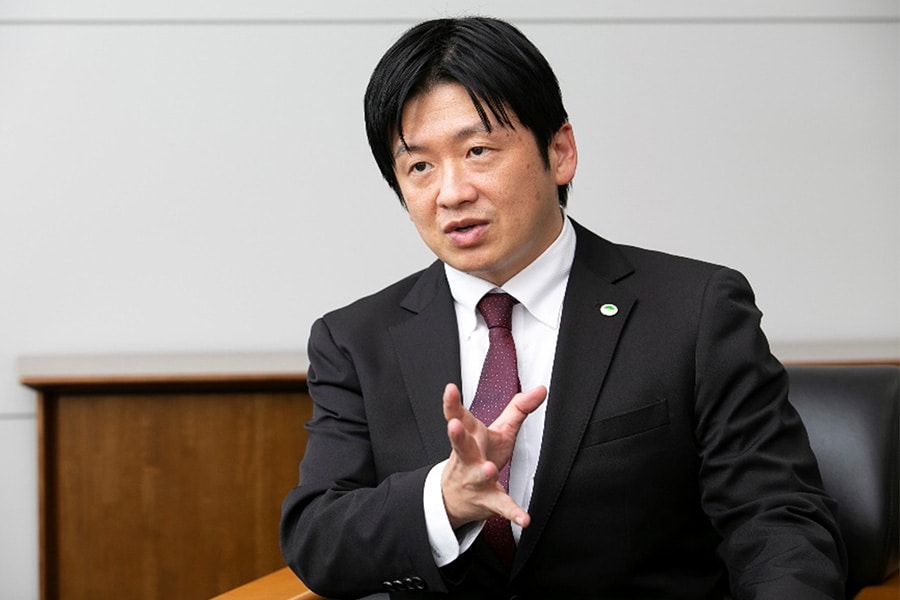
Negoro: I see Lumada use cases as the “modelization” of digital solutions that create new value through collaborative creation with customers. Could you tell me how a solution template that can be horizontally deployed is made, what kind of issues it is made to solve, and what kind of results it has produced?
Takagi: We get a particularly large number of inquiries from our manufacturer customers regarding converting to high-efficiency production by applying IoT to their factories and for supply chain optimization. A typical example of these use cases is our collaborative creation with Okuma Corporation, which is a major machine tool manufacturer.
The theme of this turned out to be the establishment at a factory of very high-variety, low-volume manufacturing for about 4,000 items. Applying Lumada's Production Planning Optimization, we jointly developed the Process Management System, which makes it possible to give work instructions for parts conveyance in real time, and the Progress & Operational Status Monitoring System, which can centrally analyze and visualize the progress of production and the operational status of facilities.
This made it possible to perform work instructions in units of hours and minutes instead of the previous units of days, thereby reducing production lead times. It also made it possible to identify bottlenecks and implement measures for such. Since then, initiatives have been pursued for expanding the results of collaborative creation between the two companies to the entire supply chain.
Negoro: Given that Hitachi itself is a manufacturer, I would think that it has many years of proven performance in the control technologies that drive equipment and systems in the field, in production technologies that upgrade the entire line, and in expertise in overall optimization, including the supply chain. And this is what Lumada makes total use of. What kind of use cases are there outside of the manufacturing industry?
Takagi: With the COVID-19 pandemic, there is demand for improving operation efficiency and enabling teleworking in such areas as social infrastructure facilities maintenance and product inspection. These needs are addressed by a solution that automatically detects facility failures and product defects at remote locations by looking for abnormal noises and states. Using this solution makes it possible to easily monitor facilities or perform quality control remotely.Another example is BuilMirai, which is a solution for office and commercial buildings developed through collaborative creation with Microsoft Japan. Even as competition for tenants in downtown buildings gets fierce, the impact of COVID-19 is driving an acceleration in workstyle reform, producing strong demand for improving the efficiency of building management operations.
BuilMirai can comprehensively and remotely monitor and analyze the operational status of equipment such as elevators and air conditioning in multiple buildings. It can also track the status of building users through people-flow data, promoting efficient cleaning and security operations as well as enabling management based on the area-by-area level of congestion.
Negoro: I saw an article the other day about BuilMirai and felt that it was the exact manifestation of “IT x OT x Products.” When considering overall building control, knowledge of not only IT but also of OT and “MONOZUKURI ” comes into close play in terms of how to make and control elevators, air conditioning, and lighting equipment and how to modify people and security management according to the usage status of the building.
This is all difficult to handle with the resources of only one company. And that's why we actively bring in other companies: to accelerate solution expansion and global deployment. I think that strategically, this is a very interesting case.
How to succeed at DX
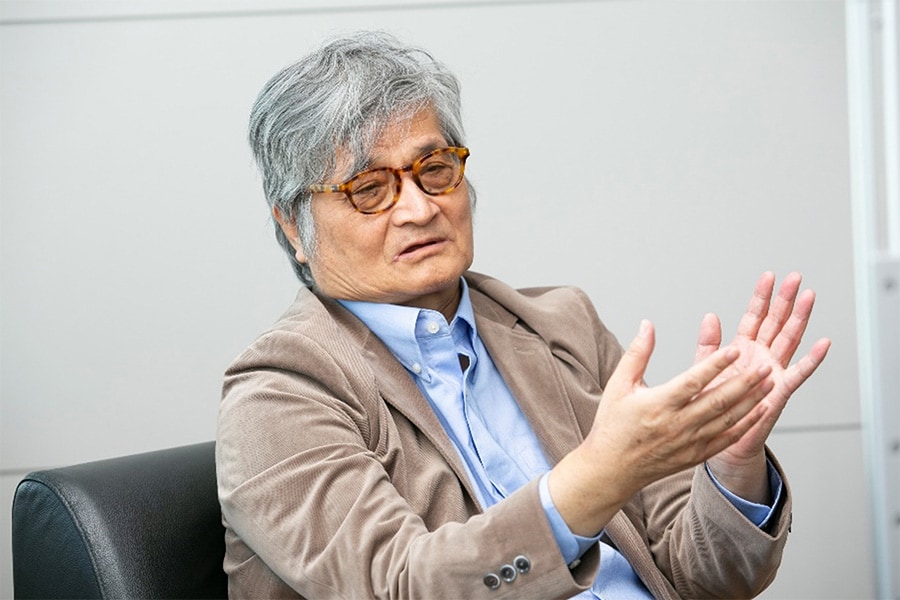
Negoro: By the way, what kind of stratagems are needed to succeed at DX using Lumada? Even if you have a full lineup of proven solutions, it's not clear if you can apply them without modification toward solving your company's issues, is it?
Takagi: First, it's important not to try to implement DX in a single step, but to start with improvements that are possible and moving on from there. For example, if you suddenly introduce a solution for optimizing the production process without yet having even visualized production performance, you can't expect it to go well. In response to this, we propose steadily stepping up the level of maturity for DX (i.e., readiness for DX) based on the Maturity Model, which is a proprietary model developed by Hitachi.
Another important factor is our collaborative creation approach. In order to go forward with DX implementation, your company must have clear goals in terms of what kind of issues exist and how you want to change them. Not many companies, however, have a good grasp of their own essential issues.
Negoro: All companies grapple with a variety of issues, but the perception of them varies depending on the role and position of the operation. All stakeholders, including those in the field and in management, need to discuss what the essential issues are, why those issues exist, what the path to solutions is, and what kinds of goals should ultimately be strived for—all things that they may not even be aware of.
Takagi: Exactly, and that's why with Lumada we provide NEXPERIENCE as a methodology for promoting such collaborative creation. Specifically, we hold a collaborative creation workshop for stakeholders in which a Hitachi expert with the skill of design thinking acts as a facilitator by helping participants freely share opinions and ideas and by leading them to take independent action toward goals that they are onboard with.
In addition, we support the creating of digital solutions by using a simulator that can verify in advance business value, such as whether the new business models or services that are to be created are truly useful to users and how much return on investment or business profit can be expected.
Negoro: Instead of just the latest technologies and systems, Lumada retains a significant strength in that it establishes a system that provides close support for identifying such customer issues and improving on the awareness of them.
However, in the “new normal,” there is the possibility of a huge number of problems that cannot cope with market changes through operation process improvement and supply chain optimization, by themselves. For example, if the autonomous driving of cars becomes practical, transportation systems based on a sharing economy will become more commonplace, possibly bringing about big changes to the business of selling private cars. I think that this is a completely different issue from production line improvement.
Takagi: We are realizing this too. Just as the shape of domestic and overseas supply chains has radically changed due to COVID-19, the products and services provided by customers might also be pressed to change. Hitachi could be required to reach out more dynamically to a wide range of management issues while keeping its eye on such changes. Lumada still has a lot of things to do.
The global deployment of Lumada
Negoro: By the way, the Lumada business has been promoting reform in Hitachi itself just as Lumada has been transforming the businesses of Hitachi’s customers, hasn't it?
Takagi: Without a doubt, since starting the Lumada business, the awareness of employees and the organizational culture have experienced big changes. The long-held "product out" idea has changed to "market in," and it has become a matter of course to provide value to customers in the form of services and solutions instead of just products.
Also, the philosophy of Hitachi wanting to go it alone has changed to one of collaborative creation with other companies. Walls between business divisions have lowered, and we more frequently work as “One Hitachi” on cross-organizational projects, such as in smart cities and Mobility as a Service (MaaS).
Negoro: I imagine that, in the Hitachi of before, the internal organization was segregated into various business domains, and product development and know-how were also separate. But as the Lumada business represents a concept for creating a certain shared platform, I think it only natural that walls between fields in the company will come down.
In other words, an aggregate-style company that was made up of multiple business domains changed into a company with a shared platform that penetrates among domains. I think that is the shape of the current Hitachi. I also think that spreading such reform in awareness along with DX achievements to customer companies through Lumada, while also establishing Lumada as a global player, will become important themes for the future.
Takagi: It's just as you say. I think that Hitachi's social innovation business and Lumada both still suffer from a low level of recognition and achievements abroad, not just in Japan. Still, various countries surely have many needs in common, so it is my hope that, in the future, Lumada will contribute to the finding of solutions for the challenges of companies throughout the world and to improving quality of life.
Negoro: Hitachi is one among the few companies that is representative of Japan's industry as a whole. I would like to see Hitachi develop further globally and blaze trails to new worlds. I have big expectations for Hitachi.
Tatsuyuki Negoro Professor at Waseda Business School
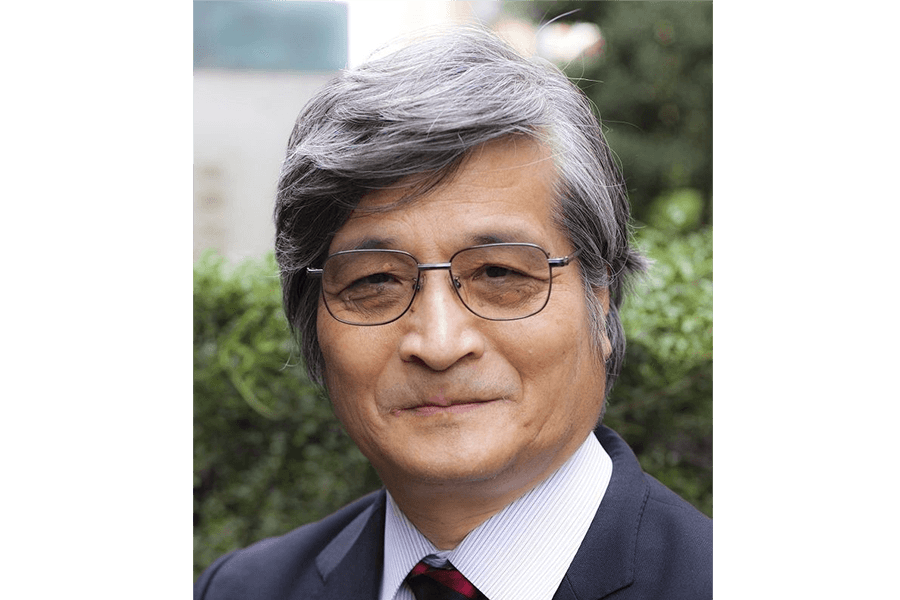
Junichiro Takagi General manager of the Application Cloud Service Business Division*, Hitachi, Ltd.
Joined Hitachi, Ltd. in 1998. Since joining, has consistently worked in the IT software field, developing middleware products for enterprises, embedded software, and various cloud services both in Japan and overseas. Since the launch of Lumada in 2016, has been involved in the business operation of various Lumada solutions that accelerate customer DX on the cloud and of the service platforms that serve as their foundation. From April 2021, will be in charge of various energy system businesses for electric power companies via the Social Infrastructure Information Systems Division.
-
*At the time of interview
